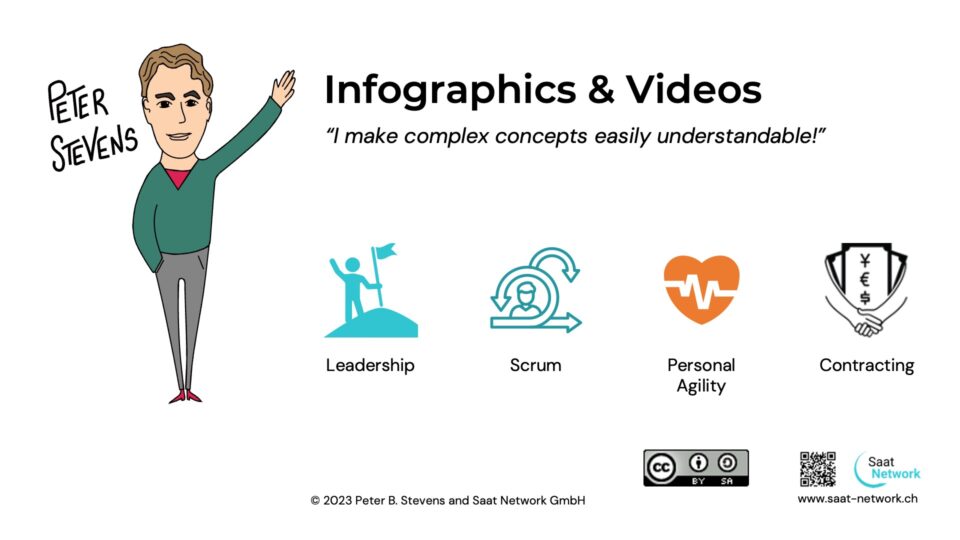Radical Management and #Stoos Workshops, Webinars and Events and Communities as of Q2 2012
11-04-2012Agile is the Vanguard of the Transformation of Management
19-04-2012Steve Denning recently wrote that disruptive innovation is a disease which has destroyed company after company. A number of comments challenged his use of the word “disease.” What is a disruptive innovation? Is it a disease, are you getting it, and what can you do about it?
The term disruptive innovation was coined by Clayton Christensen in his book ‘The Innovator’s Dilemma.’ A disruptive innovation occurs when a new technology is developed that is lower cost and qualitatively inferior to existing approaches — measured along the criteria of the existing market — but offers other unique advantages to a new market. The new technology innovates faster than the established technology and eventually replaces the old technology at a lower cost, destroying the established players.
So calling the problem a “disease” is pretty close to the mark. The disease is not disruptive innovation per se, but the inability of established companies to react to it properly. Perhaps calling the “Disruptive Innovation Syndrome” would be a better word.
I have been in the IT business long enough to remember:
- Minicomputers displacing mainframes to the stratosphere
- Unix Workstations displacing minicomputers and forcing them out of existence
- Intel PCs doing the same to UNIX workstations
- Linux/Intel Servers doing the same to UNIX servers
and the list goes on. Today were can observe
- SSDs are starting to displace hard disk drives
- Tablets are displacing netbooks
For an established player, there are many challenges to adopting a disruptive technology:
- Innovative ideas originate at the lowest levels of the organization. Without an innovation culture, these ideas do not filter up to the top-level decision makers.
- New, low-cost technologies do not have an obvious market. Getting a go from top management to invest is difficult due to the risk and uncertainty of a small, new market.
- The new technology is unlikely to contribute significantly to the bottom line or growth of a large organization in the first years after introduction.
- Investment decisions are not made just once at the top, but on a daily basis by middle management over the life of the project. It’s called ‘allocating resources’ and established customers with well known needs are a lower risk than uncertain new markets. So products for established customers get the best resources.
- The company’s marketing “value network”, i.e. its sales channels, marketing approach, and cost-structure are oriented toward existing customers. A company often literally does not know how to identify new customers or how to sell to new markets. Because margins and volumes are low, it is not financially interesting to do so.
So most companies simply choose not enter disruptive markets. The task is too daunting! And in the few cases that they do, it is very difficult road and most attempts are not successful.
What does it take to combat this syndrome?
Christensen argues that the technology itself is not the problem. It’s the value network around the company which traps the company into its business model. The most successful approach he has observed is creating new business units which are independent of the existing business units and proportional in size to the target markets. IBM took this approach launching their PC business — and went on to lose the market when it brought the PC division back into the fold, building closed, IBM-only devices which were slower and more expensive than their competition.
Apple takes a variation of this approach due to the extreme secrecy within the organization. Apple behaves like multiple start-ups which are in many ways unaware of each other, preventing much politics between the departments.
Steve Denning argues that companies need to have much more room for innovation. They need to adopt a culture of continuous innovation. The focus on the bottom line is counterproductive in the face of disruptive innovation.
What should you do? I don’t believe these approaches are mutually exclusive. If you emphasize creating happy customers over the bottom line, then you know there are times to develop new customers and that a short term drop in profitability is a small price to pay for the long term survival and growth of the the company.
You need to create space to explore disruptive technologies. You need to recognize that much learning is involved and some attempts may fail. You need to identify new markets and new marketing approaches. You need to accept that the new approach will initially have lower volumes and probably always will have lower margins than your mature, existing products.
Once you decide that one product is a potential winner, you need to ensure focus. This means shielding the people and budgets from the pressures of your mature high-volume products. If you say ‘A’, and expect to get to ‘Z’, then you need to say, B, C, D, etc. until you get to Z. So if you are going to develop a disruptive product, you need to have top people working on it and you may not pull them off the new product development to support your cash cow.
Does the new venture have to be a separate business unit? A priori no, but there is a lot of practical experience which suggests this is a good idea.




